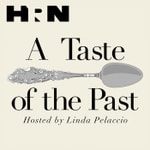Magazeum – Details, episodes & analysis
Podcast details
Technical and general information from the podcast's RSS feed.

Magazeum
Patrick Mitchell
Frequency: 1 episode/12d. Total Eps: 106

Recent rankings
Latest chart positions across Apple Podcasts and Spotify rankings.
Apple Podcasts
🇺🇸 USA - design
26/07/2025#72🇺🇸 USA - design
25/07/2025#52🇺🇸 USA - design
24/07/2025#47🇬🇧 Great Britain - design
23/07/2025#90🇺🇸 USA - design
23/07/2025#81🇬🇧 Great Britain - design
22/07/2025#74🇺🇸 USA - design
22/07/2025#38🇫🇷 France - design
22/07/2025#92🇬🇧 Great Britain - design
21/07/2025#51🇺🇸 USA - design
21/07/2025#35
Spotify
No recent rankings available
Shared links between episodes and podcasts
Links found in episode descriptions and other podcasts that share them.
See allRSS feed quality and score
Technical evaluation of the podcast's RSS feed quality and structure.
See allScore global : 73%
Publication history
Monthly episode publishing history over the past years.
Tom Bodkin (Chief Creative Officer: The New York Times)
Season 4 · Episode 45
vendredi 30 août 2024 • Duration 01:05:11
THE FIFTH
—
You cannot overstate how much Tom Bodkin has changed the Times. In fact, you can say that there was the Times before Tom and the Times after Tom.
The Times before Tom threw as many words as possible at the page, with little regard for the reader. The Times before Tom thought tossing a couple of headshots on the page was all the visual journalism we needed. The Times before Tom held to a hierarchy where designers were the other, somehow not quite journalists.
Then there is The New York Times after Tom.
Tom taught us that design was not only integral to journalism, it was in fact integral to storytelling at its height. The front page that listed the COVID dead was more powerful than any one story could ever be.
Roy Peter Clark, the writing guru at the Poynter Institute, captured it best:
“Nothing much on that front page looked like news as we understand it, that is, the transmission of information,” he wrote. “Instead it felt like a graphic representation of the tolling of bells. A litany of the dead.”
Personally, Tom taught me something that made it easier to lead the newsroom in the digital age: Design demands a level of open-mindedness to the possibilities of different types of storytelling. It also rewards collaboration, since the most perfect stories are told by different disciplines working together to convey the best version of the truth every day.
Those, in fact, are the qualities that mark the modern, digital New York Times. Qualities that honestly have made it the most successful news report of the day.
Hard to imagine we—certainly not I—would have been prepared for this new world without Tom’s leadership.
—
This episode is made possible by our friends at Mountain Gazette, Commercial Type, and Lane Press.
A production of Magazeum LLC ©2021–2025
Best of PID—Hans Teensma (Designer: Outside, New England Monthly, Disney, more)
Season 4
vendredi 23 août 2024 • Duration 36:05
DUTCH MASTER
—
Dutch-born, California-raised designer Hans Teensma began his magazine career working alongside editor Terry McDonell at Outside magazine, which Rolling Stone founder Jann Wenner launched in San Francisco in 1977.
When Wenner sold Outside two years later, Teensma and McDonell headed to Denver to launch a new regional, Rocky Mountain Magazine, which would earn them the first of several ASME National Magazine Awards. On the move again, Teensma’s next stop would be New England Monthly, another launch with another notable editor, Dan Okrent. The magazine was a huge hit, financially and critically, and won back-to-back ASME awards in 1986 and ’87.
Ready for a new challenge — and ready to call New England home — Teensma launched his own studio, Impress, in the tiny village of Williamsburg, Massachusetts. The studio has produced a wide range of projects, including startups and redesigns, as well as pursuing Teensma’s passion for designing books.
Since 1991, Teensma has been incredibly busy: He was part of a team that built a media empire for Disney, launching and producing Family Fun, Family PC, Wondertime, and Disney Magazine. He’s designed dozens of books and redesigned almost as many magazines. And he continues to lead the creative vision of the critically-acclaimed nature journal, Orion.
You might not know Teensma by name, but his network of deep friendships runs the gamut of media business royalty. Why? Because everybody loves Hans.
When they designed the ideal temperament for survival in the magazine business, they might as well have used his DNA. He’s survived a nearly 50-year career thanks to his wicked sense of humor, his deep well of decency, and above all, his unlimited reserves of grace.
You’re gonna love this guy.
A production of Magazeum LLC ©2021–2025
Versha Sharma (Editor: Teen Vogue)
Season 4
vendredi 14 juin 2024 • Duration 31:58
IT’S COMPLICATED
—
If Teen Vogue’s editorial still surprises you, it might be time to admit that this says more about you than it does about Teen Vogue. And also, perhaps, that you haven’t been paying attention.
Teen Vogue is not the first magazine aimed at “the young” of course, and it’s not the first one to address multiple issues. But…Teen Vogue is the first, perhaps, to make a certain kind of noise.
Since well before the Trump presidency, but certainly turbocharged during it, Teen Vogue has mixed tips on fashion and beauty, profiles about the latest girl groups from Korea, and the scoop on the stars of Bridgerton, with political analysis and opinion, stories about identity and social justice, and an election primmer that is maybe one of the most thorough you’ll find anywhere.
Versha Sharma has been editor since 2021 and has not only maintained all the pillars that make up Teen Vogue but enhanced them. She came to Teen Vogue from overtly political media like Talking Points Memo, NowThis, Vocativ, and MSNBC. And she says she’s landed her dream job.
Sharma and her team are unabashed and unapologetic about what they do—and know that they are serving a large community of very active young women (65% of the readership) who follow the brand on every social channel imaginable, visit the website by the millions, and attend Teen Vogue Summits—in person!—to listen to their favorite influencers, singers, entrepreneurs, actors and activists talk shop.
Sharma feels like the luckiest editor in the industry. But one thing is missing: paper.
Teen Vogue discontinued its print edition more than seven years ago. Her new dream? Convincing her bosses at Condé Nast to bring it back.
A production of Magazeum LLC ©2021–2025
David Remnick (Editor: The New Yorker)
Season 4 · Episode 44
vendredi 7 juin 2024 • Duration 48:43
THE FIFTH
—
I want you to stop what you’re doing for just a moment and imagine we’re back in 1998. (Those of you born since then will have to use your imagination). We’re on an ASME panel exploring the future of magazines in the digital age.
The moderator, eager to get the discussion off to a lively start, turns to you and asks, “What magazine that we all cherish today is least likely to adapt and survive what’s coming?”
Without hesitation you blurt out “The New Yorker!”
The audience murmurs in agreement.
“The Atlantic!” someone shouts from the crowd.
More murmuring.
I’m not surprised. Neither is anybody else in the room. It’s almost three decades ago, and yet we’ve already headed into a new world of “nugget” media—and the total loss of our collective attention spans. Hell, magazines that feature 25,000-word polemics on topics like the squirrels of Central Park are already dinosaurs, even here in 1998.
It’s a bleak outlook for an institution—I’m talking about The New Yorker—that claims the following heritage:
- It has survived two world wars and the Great Depression,
- it’s been led by only five editors, ever, in its 71-year history,
- it didn’t use color—or photography!—until its 67th year when a young, supremely talented, and controversial Brit took over in 1992,
- and it’s now run by a former newsman who had never edited anything except his high school newspaper.
But here’s the thing: It’s 2024 and we’re looking at a decimated magazine business. Mighty brands and hot-shit startups alike are dead and gone—or running on fumes. The big publishers are divesting from print right and left.
And yet, there is a shining light.
Today The New Yorker is busy preparing for its 100th anniversary, with that same newsman at the top of the masthead who has brought video, events, podcasts, print (a magazine!)—and even some branded pajamas—together with the most legacy of legacy brands to create a 21st-century media juggernaut.
—
This episode is made possible by our friends at Mountain Gazette, Commercial Type, and Lane Press.
A production of Magazeum LLC ©2021–2025
Gail Bichler (Designer: The New York Times Magazine)
Season 4 · Episode 43
vendredi 31 mai 2024 • Duration 59:27
THE FINE ART OF MAGAZINE MAKING
—
Imagine this: You’re a 42-year-old designer who’s only worked at one magazine. Ever. Then one day, unexpectedly, you’re tasked to lead the design of that magazine. Now imagine that the magazine is universally lauded as a design masterpiece. Add to that, your immediate predecessors have both been enshrined into every hall of fame across the design and media universe.
Heard enough? Well now throw into this mix that your job is only an interim post.
Why? Because just as your boss was leaving, his boss was out the door, too. That’s right, now you’ve got to navigate all of … this … while the company is searching for your new boss. And whatever you did that got you a shot at this opportunity the first time? You’re gonna have to do it all again. And likely for an editor who’s been tasked with coming in and shaking things up a bit.
“I’m fucked,” you might think. But you’re not Gail Bichler.
As you already know, Bichler survived the turmoil that started her tenure at The New York Times Magazine. And the astonishing thing—well, astonishing until you know more—is that Bichler has not only maintained the exalted design standards, she has pushed even further.
“Her magazine looks different from Rem [Duplessis]’s, as Rem’s did from mine. She’s pushed the envelope in dramatically new directions,” says her legendary predecessor—and the woman who discovered Bichler—Janet Froelich. Why? Because Bichler is an artist. And, as Froelich states, “she chooses to work with people who work the way artists work. She’s firmly committed to ideas and, most importantly, to journalism.”
“What elevates her as a leader is the discipline, structure, and consistency she brings,” says Arem Duplessis, whose departure for Apple created the opportunity for Bichler to move up. “Gail has always been so reverential to the Times’ legacy—and she fiercely protects that.”
—
This episode is made possible by our friends at Mountain Gazette, Commercial Type, and Lane Press.
A production of Magazeum LLC ©2021–2025
Kerry Diamond (Founder & Editor: Cherry Bombe)
Season 4
jeudi 30 mai 2024 • Duration 41:09
THE CHERRY ON TOP
—
Cherry Bombe is a full-course meal. Its founder, Kerry Diamond, created the magazine after working in titles like Women’s Wear Daily and Harper’s Bazaar, and after working for brands like Lancôme. And in the restaurant industry. She worked in restaurants at a time when everything culinary was in the ascendance in the zeitgeist.
That’s also when Diamond realized a key ingredient was missing. None of the brash rising stars at the table were women. She had also been hearing from women who found the going in that world challenging. This in an industry that is difficult for everyone to begin with. Out of this came Cherry Bombe.
Today, Cherry Bombe is a full-fledged and rising media empire. It’s a magazine, sure, but their menu also includes multiple podcasts and a series of wildly-successful events. Their community, called the “Bombe Squad,” meet each other on Zoom, at the events, and form a tightly-connected sisterhood of fans and evangelists for the brand.
Diamond makes it sound like she built all of this without a blueprint, and maybe she did. But just like the best recipes, sometimes the tastiest things are the result of the happiest accidents.
A production of Magazeum LLC ©2021–2025
Willa Bennett (Editor: Highsnobiety, GQ, Seventeen, more)
Season 4 · Episode 42
vendredi 24 mai 2024 • Duration 46:27
THE HOLLYWOOD REPORTER
—
In early April, what’s left of the magazine industry gathered at Terminal 5 to see who would win this year’s National Magazine Awards—the ASMEs. Throughout the evening, the usual suspects stepped up to accept their Alexander Calder brass elephants—the ‘Ellies’—on behalf of their teams at The Atlantic, New York, and The New York Times Magazine.
Then came the award for General Excellence, Service and Lifestyle—a category that covers every food, fashion, and fitness magazine in the business.
And the Ellie went to… content juggernaut Highsnobiety—a sneaker blog-turned-cool kid media amalgam that encompasses a twice-annual $20-per-issue print magazine, plus a flood of social media, a website that is also an e-commerce platform, and a creative agency that does 360-degree marketing and storytelling for brands.
Before the crowd could start scratching their graying heads, a Billie Eilish lookalike in a gray Thom Brown skirt-and-pant suit took to the dais. There were plenty of people in that room who had never given Highsnobiety much, if any, thought.
But in that moment, this woman, Willa Bennett, Highsnobiety’s 30-year-old editor-in-chief, had officially become a force to be reckoned with. Not only that, but Highsnobiety’s business model, which bends rules that had long been sacrosanct in magazine journalism, suddenly appeared to have won the seal of approval from the oldest of the old guard.
The post at Highsnobiety was a major leap for Bennett. Just two years ago, she was the social media manager at GQ. Our friends who worked with her there tell us they thought of her as “the industry’s little sister”—hungry, passionate, and looking to translate the magic of magazines to a new generation. They said that even though she’s disrupting the magazine as we once knew it, at heart Bennett is a “a magazine junkie who really venerates the old ways.”
And now the surprise win has put her in the spotlight of the establishment media, with The New York Times Styles running a portrait of Bennett in her signature suit-and-tie look on its cover. The win inspired a segment on the Slate Culture Gabfest in which the hosts pondered, “What Is a Magazine Now?”
Over in Spreadlandia, we thought, Why not turn that question directly to Willa Bennett herself? In the end, this conversation left us feeling more optimistic than usual about the future of media. It also made us feel old as shit. We hope you enjoy it as much as we did.
—
This episode is a special collboration with our friends at The Spread and is made possible by our friends at Mountain Gazette, Commercial Type, and Lane Press.
A production of Magazeum LLC ©2021–2025
Mike Rogge (Editor & Owner: Mountain Gazette)
Season 4
vendredi 17 mai 2024 • Duration 36:58
WELCOME TO THE GREAT OUTDOORS
—
Mountain Gazette is one of those media … things … that only long-time fans really know about, with a long and colorful history. A kind of Village Voice of the outdoors, the first incarnation (1966) of the magazine was about mountains and for “mountain people”—a lifestyle magazine for those who weren’t interested in either coast, let alone cities, let alone New York.
Like many magazines, the Gazette succumbed to economic forces and shuttered. Twice. Until Mike Rogge, a journalist and film producer, and more important than that, an avid skier and outdoorsman, purchased the archives and the rights at a bar in Denver. The deal was drawn up on a napkin and consummated with a beer.
Mostly he bought it because it was there.
Rogge felt the media, specifically what he calls the outdoor media, was broken. Especially the advertising model. And he had grown tired of the arcane and opaque revenue streams of the digital world. So he decided to do his own thing. He rejected those models, and plowed into print.
And he went big. Literally. The result is a magazine that is a success in every sense of the word: aesthetically, editorially, and financially. It’s a black diamond in a magazine world that often feels like a series of bunny slopes.
But Mike Rogge and Mountain Gazette have proven something: you can have your mountain and ski it too.
A production of Magazeum LLC ©2021–2025
Janice Min (Editor: The Hollywood Reporter, Us Weekly, Ankler Media, more))
Season 4 · Episode 41
vendredi 10 mai 2024 • Duration 56:28
THE HOLLYWOOD REPORTER
—
A good editor can, theoretically, edit any magazine, regardless of genre. But in some cases, you need an outsider to make things right. To see the forest for the trees.
To that end, Janice Min has planted acres of forests—one tree at a time—on both coasts, where the Colorado-born editor considers herself an outsider.
“I cared about almost none of this. I don’t care about celebrities or reality stars. It was my job to just think about how to interpret what they were saying and turn that passion into stories. I don’t think that the editors always have to be their audience, but I also think, as an editor I was able to be removed from it and glean like, ‘That pops. That’s the most important story.’”
From Us Weekly, where her instincts led to a massive increase in readership that saved the floundering publication—and likely all of Wenner Media—to The Hollywood Reporter, which was in a death spiral but is now, once again, a widely-respected and well-read industry bible, Min has played a major role in creating what we now call the celebrity-industrial complex, as well as the rise of what became social media and the influencer economy. That’s all.
Now, as cofounder of Ankler Media, Min is once again rethinking publishing—and celebrity. The company is centered around its newsletter, The Ankler, which bills itself as “the newsletter Hollywood loves to hate—and hates to love” and is currently one of the top three business publications on Substack.
—
This episode is made possible by our friends at Mountain Gazette, Commercial Type, and Lane Press.
A production of Magazeum LLC ©2021–2025
Emma Rosenblum (Chief Content Officer, Bustle)
Season 4
vendredi 3 mai 2024 • Duration 37:28
EVERYTHING OLD IS NEW AGAIN
—
Emma Rosenblum is a best selling author and is about to release a new novel. But that’s not why she’s here.
As the chief content officer at Bustle Digital Group, overseeing content and strategy for titles like Bustle, Elite Daily, and Nylon, she has witnessed some if not all of the massive shifts and changes in the media business. The ups and downs and highs and lows, as it were.
Emma’s media past includes stints at New York magazine, where she began her career, Glamour, Bloomberg Businessweek, Bloomberg Pursuits, where she served as editorial director, and Elle, where she was executive editor.
Meaning she’s a good person to talk to about the state of media today, a world where the change never stops. And she also has an insider’s opinion about the legacy big publishers and the advantages that BDG, as a digital-first operation, might have over them.
And did we mention she’s an author? Her first novel, Bad Summer People, was a national bestseller and her second novel, Very Bad Company, will be released in the coming weeks.
A production of Magazeum LLC ©2021–2025









